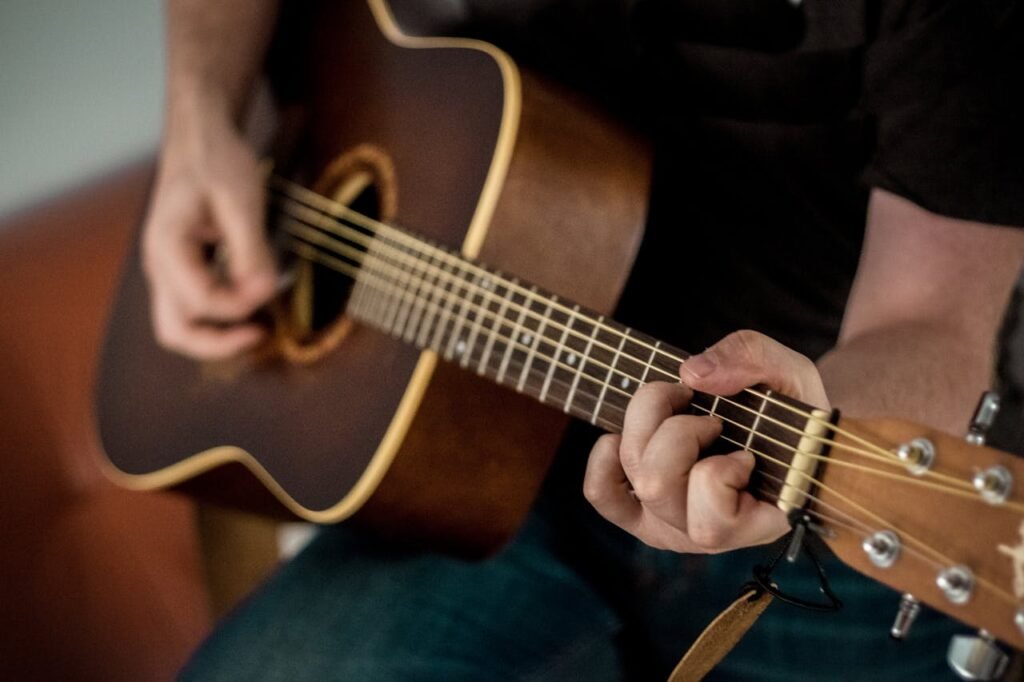Do you ever ask yourself why your guitar playing sounds like a cattle-up yowl rather than a harmonious pop song? The problem may be with the guitars tuning keys (sometimes called pegs, tuners or machines). But don’t worry, oh, aspiring guitar player!
Time for turning negative feedback players into confident string winders. Finally, let’s rock as we take you further on the inner workings of guitar tuners, share with you fundamental skills, and introduce you to some across-the-board tricks for the perfect pitch guitar.
Benefits of Stellar Tuning Keys for Your Guitar
However, tuning keys fulfil the purpose of raising or lowering the pitch, and the following are the numerous extra advantages of high-end tuning keys. Now, let’s explore why tuning keys for your guitar must be the best—otherwise known as stellar tuning keys worth an investment for every guitarist.
1. Enhanced Tuning Stability:
- Another advantage of good tuning keys is that they will keep your guitar in the right pitch most of the time. Affordable or old tuning keys are likely to rub against the strings or corrode, leading to a fluctuation of tone, either in the bass or in the treble.
- Tuning keys are substantial and well-developed with smooth gears, ensuring that the strings’ tension is appropriate and can be maintained without having to re-tune every now and then.
2. Improved Tuning Accuracy and Precision:
- Tuning keys with better ratios and high-quality materials makes it easier to fine-tune the gear. It enables you to set the perfect pitch easily and distinguish them quickly and easily from those keys, which are comparatively inferior and rough in their touch.
3. Effortless Tuning and Playability:
- Stunning tuning keys that glide through the frets ensure that tuning is easy and fast. Let the cracking or sticking of some mechanisms make your adjustments difficult no more.
- Easy tuning of these musical instruments is less time-consuming, making it enjoyable to play without much struggle in tuning the instruments.
Tuning Your Guitar in Standard Tuning
Standard tuning refers to the pitches assigned to your guitar’s six open strings (strings not fretted). These notes, going from the thickest string to the thinnest, are:
- E (Low E)
- A
- D
- G
- B
- E (High E)
There are a few fun mnemonics to help you remember this order, like “Elephants And Donkeys Grow Big Ears” or “Eddie Ate Dynamite Good Bye Eddie” (the sillier, the easier to recall!).
Tuning Tools for the Job
Now that you realize your ideal notes, it is time to find out how to get them! Here are some popular methods to tune your guitar in standard tuning:
- Electronic Tuner: This is the simplest and the most precise way to use a tuner, which is highly suitable for beginners. These handy devices use an in-built microphone or a clip-on mechanism to capture sound produced by strings and show notations of the tune you are playing. All you need to do is turn the tuning keys, which are the knobs on the top of the headstock so that a tuner shows the proper pitch, normally whenever a small needle is in the middle, or there is a green light.
- Smartphone Apps: To elaborate, there are many free and paid applications for guitar tuners that function like electronic tuners. All you have to do is attach your phone to the headstock of your guitar and use the app’s microphone to tune the strings.
- Tuning by Reference Pitch (for experienced players): The tuning fork or any other better-tuned string or pipe (like a piano) is standard. Tune the open strings on your instrument to the respective note on the reference instrument. This is easier said than done and may provoke a rise in errors, especially if done by a beginner.
Dos and Don’ts of Tuning Your Guitar
Do: Using a tuner, whether a mechanical or a mobile application, at the beginning when you are still practising, is recommended.
- Don’t Wrench the tuning machines. If the string feels stiff, apply a tiny drop of lubricant to the string’s tuning machines. Avoid petroleum-based lubricants.
- Do: New strings should be stretched a little to help them settle, as they cause a lot of instability while tuning.
- Don’t: Regarding the overly tight strings, the following should suffice: It is important and relatively comfortable to produce the right frequencies with as little pressure as possible.
- Do: Clean your strings and fretboard often to prevent the buildup of grime, sweat, and other deposits that interfere with tuning.
- Don’t: Place your guitar somewhere where the temperatures are high or low or where humidity changes often; this will affect the tuning.
Myths and Facts About Guitar Tuning Machines
Tuning machines, guitar tuning pegs, tuners, and tuning keys are the behind-the-scenes stars of the guitar universe. They help maintain the great condition of your instrument, but some myths prevail in the community. Well, here are the facts and some Myths and Mysteries!
Myth #1: It was previously thought that all tuning machines are the same.
Fact: Thus, tuning machine quality is known to fluctuate relatively widely. Inexpensive or low-quality tuners may not be sensitive, smooth, and have the ratcheting action of better tuners; their tension screws may even become stiff and have slippage problems and can never provide good tuning. Quality tuners differ in using more refined material, gear engagement systems, better tuning stabilization, and accuracy.
Myth #2: The guitar you buy is used once or several times in the case of the great performers and remains untouched forever.
Fact: Strings are under tension, and as time passes and with further use, they are pulled slightly tight and go sharp (or higher pitch). You will be in a position to correct your guitars and accordions more often, particularly when you have newly put the strings on. Other environmental factors that may also cause variability in tuning include temperature and humidity.
Myth #3: That means you must turn the tuning machines extremely fast for the strings.
Fact: As much as you need to apply some tension to bring out pitch and eliminate buzzing, applying too much force will harm the gears on the tuning machines or even the string. When the string has been tuned and reaches a certain pitch, do not rotate the tuning key in the same direction.
Conclusion
Remember, these wonders are the tools for obtaining and maintaining the ‘right’ pitch and rightfully releasing your musical geniuses. Thus, get the best tuning machines available, maintain the equipment to achieve perfect condition, and it is advisable to try out different tuning styles when growing as a tuner. Happy strumming!
Photo by 42 North:







